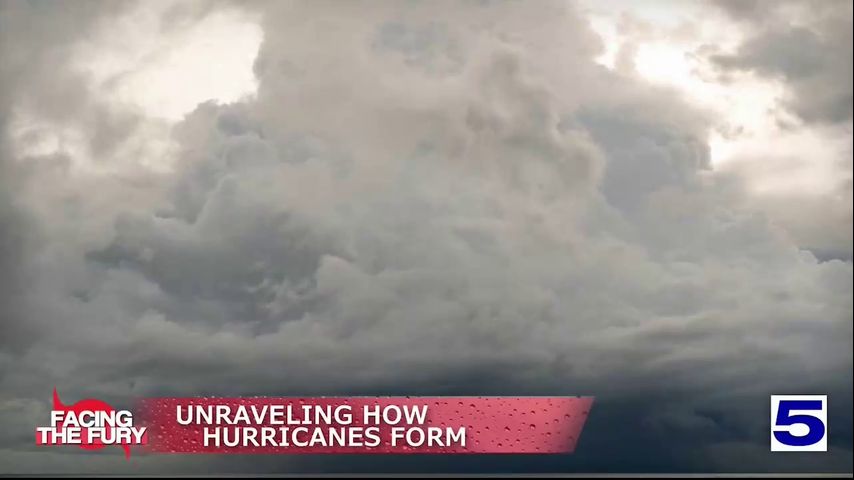Facing the Fury: How storms form
Wind, rain, storm surge, and sometimes tornadoes.
One, if not all, of these can be a deadly combination — and a direct result of one of nature's most merciless acts.
Hurricanes are a complex force, and they can strengthen or disappear in the blink of an eye.
But to understand and forecast hurricanes, we need to know how they are made.
Hurricanes can form anywhere in the Atlantic, but a lot of them start to take shape on the west coast of Africa as a cluster of thunderstorms.
From there, they feed off of the warm ocean water, which acts like fuel for these storms.
Warm air starts to rise, and eventually a low pressure system forms.
This is what gives hurricanes its distinct, counterclockwise rotation.
Trade winds take over and move the storm system west over warmer water.
More air rushes in and releases more heat into the atmosphere, causing the storm to grow. The process of evaporation and condensation continues on a cycle.
As the system grows, it rotates — and eventually an eye is formed.
When wind speeds reach 74 miles per hour, it becomes a Category 1 hurricane. They need warm water, thunderstorms, and consistent wind to keep developing.
If you don't have one or more of these, the storm falls apart. Sometimes that can happen in less than a day.
This is what makes hurricanes hard to forecast at times, they depend on a multitude of factors to determine strength, travel speed, and even direction they go.
So, whether you're watching from afar, or in the path of the storm, it's best to stay prepared.
Watch the video above for the full story.





